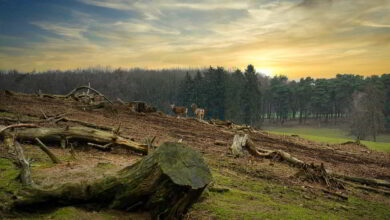Rainforests are often referred to as the “lungs of our planet”, but that would be understating their value. These largest rainforests in the world holds terrains rounding our plant and home to astonishing creatures of planet earth. Huge numbers of them cannot be found at any other place on Earth. The simple fact is that rainforests play a vital role in the eco-system of our planet and if we allow them to disappear; then it might be a goodbye for us.
Majestic old grown trees that clean the air we breathe and below them we barely dream of lives amongst that dense cover. It will lead us to some of the largest and most beautiful rainforests on Earth. Their magnificence and vital jobs allow life to be perpetuated here on our planet.
Table of Contents
The woodlands are filled with packs of forests that can amuse you and leave in awe. Read on to discover information about these incredible jungle and understand why preserving them has never been more important.
1. Amazon Rainforest – 6.7 million km²
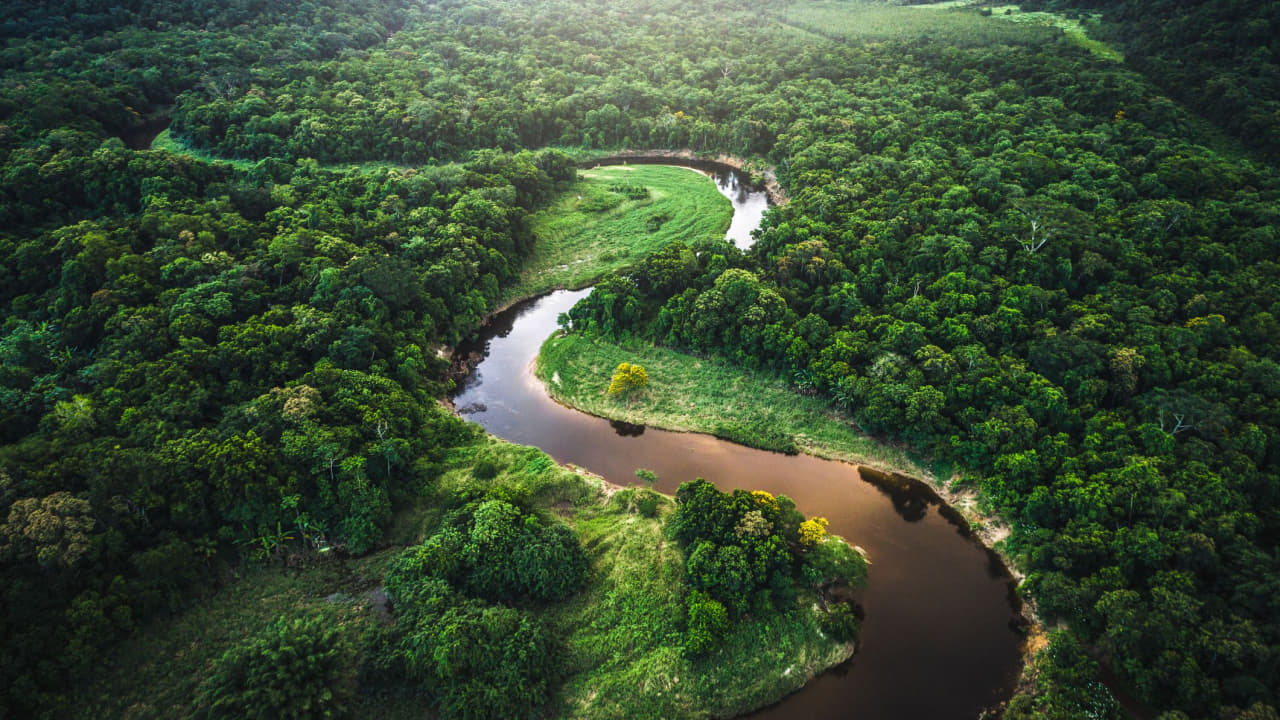
Amazon is the largest tropical rainforests on earth by area of around 6.7 million square kilometers according to the NASA Earth Observatory. It is equal half percentage of all remaining rainforests in the whole world and sometimes called the “lungs of Earth”.
It spreads across nine South American countries, with the largest parts in Brazil. Brazil first followed by Peru, Colombia, Ecuador, Bolivia and Venezuela along with Guyana, Suriname, and French Guyana. The Amazon jungle is enormous and considered to be one of the most important centers of biodiversity on planet earth. There are around 390 billion individual trees here, and up to 16,000 species.
Within this expanse of forest, flows the largest river by water discharge volume and second-longest river on earth. The Amazon River provides an array of bio-systems. Forests, however, are a huge player within the climate system for their ability to draw down and circular CO2 through a sound carbon sink. The Amazon is the hottest of hotspots with hosting 10% of the world’s species, according to the World Wide Fund (WWF). Including iconic Amazon rainforest animals like jaguars, sloths and pink river dolphins alongside some amazing birds and insects.
However, this vital habitat is rapidly disappearing as it is disappearing by agriculture (including soy and sugarcane), cattle ranching, logging, and mining. Nineteen-third of the Amazon has disappeared in just a few decades, and deforestation causes about 8% of total greenhouse gas emissions from such rainforests around the world. Brazil among the areas is on top of forest loss with over 100,000 square miles of woodland decline (260,000 square km) since 2001, according to data from Global Forest Watch. The conservation effort is ongoing; however, it faces a difficult challenge as the area contains many other social and economic stressors as well.
2. Congo Basin – 1.6 million km²
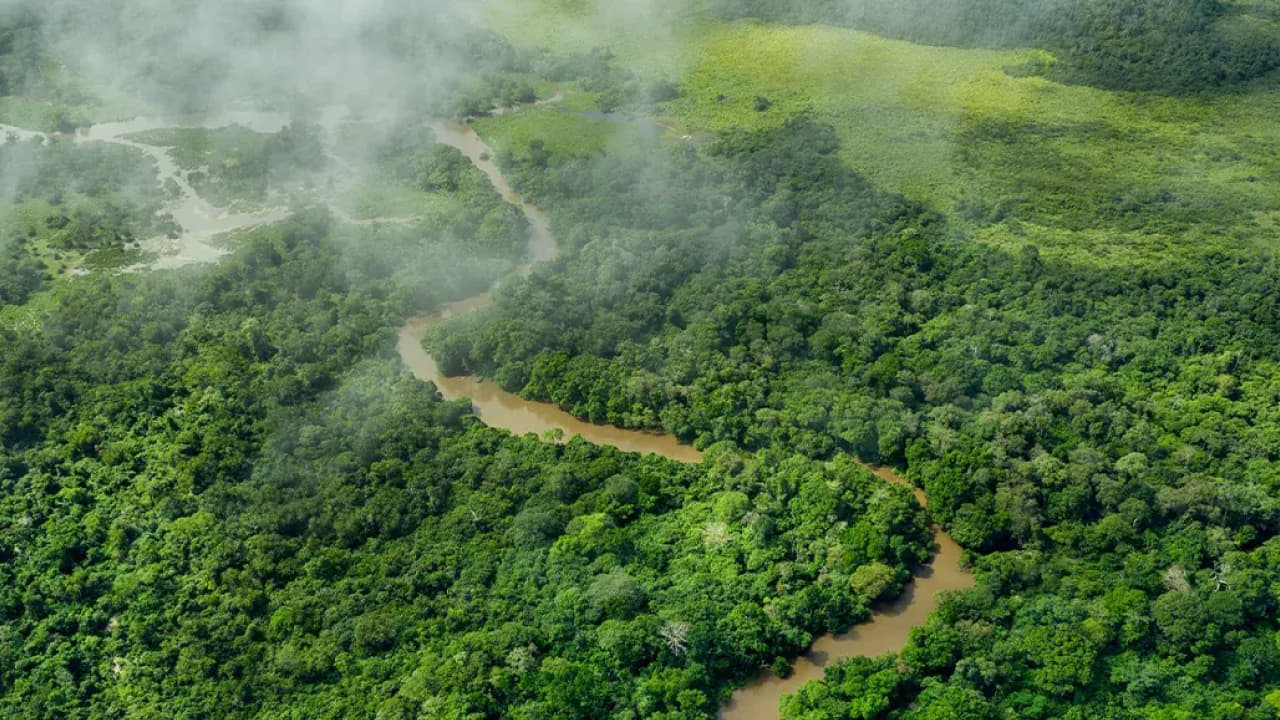
The Congo Basin is the world’s second largest rainforest after Amazon with an area of 1.6 million square kilometers, according to the WWF. The Congo Basin spans six countries in Central Africa, including The Democratic Republic of Congo (DRC), Cameroon, the Central African Republic (CAR), Gabon, Equatorial Guinea and The Republic of Congo. You can think of the Congo Basin as “Heart of Africa”. It states that it is part of central African location and has one role in the heartland of regional and global ecological balances.
The Congo rainforest is a biodiversity hotspot and home to some of the world’s most iconic and endangered species. Such as gorillas, forest elephants, okapis, and bonobos. The Congo River is the second largest river in Africa pass through this region. It supplies vital nutrients to both vegetation as well as fauna of the forest.
The second of the largest rainforests in the world is a critical weapon against climate change and home to more than 60 billion metric tons of carbon. But this important region is being rip-off by logging, agriculture, mining and other types of occupation as well as political instability as reported by Mongabay.
But rates of deforestation are lower in Congo than the Amazon. The conservation of this rainforest has been a collective effort along interest groups joining to save the environment. It is fighting poverty, as well as governance problems in the area.
3. Atlantic Forest – 1 million km²
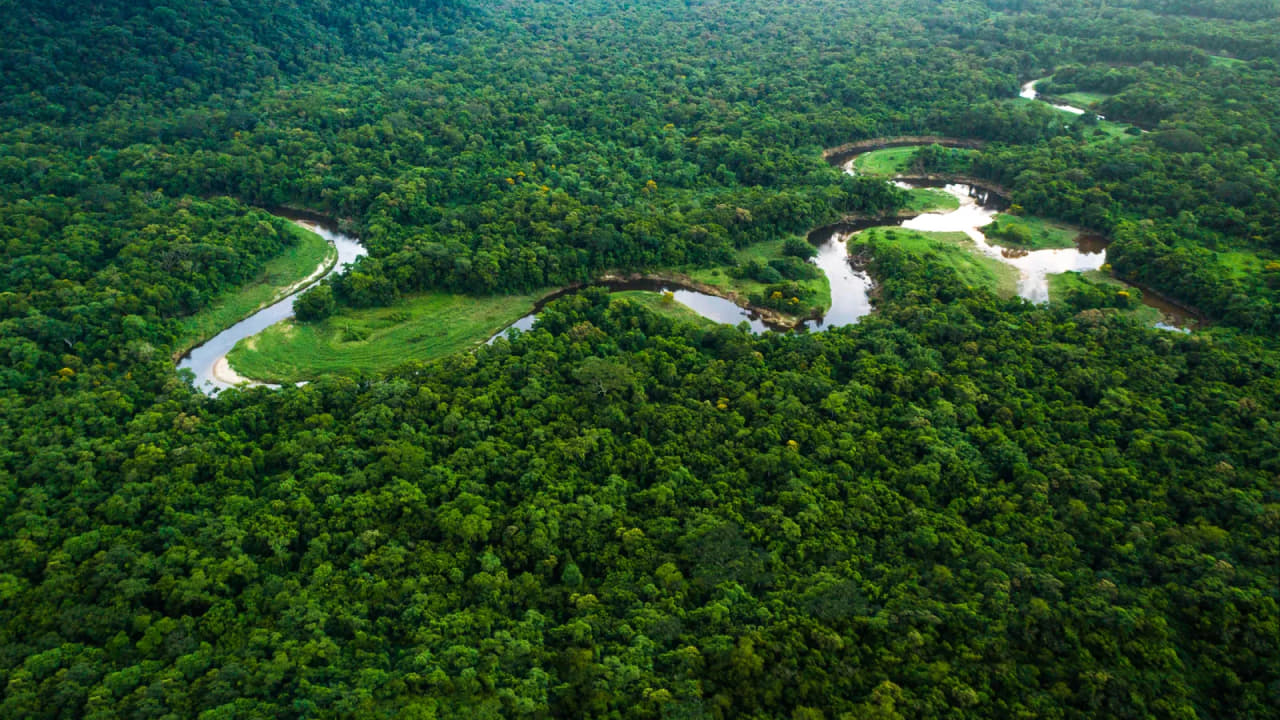
The Atlantic Forest, also known as Mata Atlântica in Portuguese is one of the most crucial and endangered tropics on Earth. The dense forest was divided into sub-regions and holds over 1 million square kilometers of land along the eastern coast of Brazil. It extended further inland to parts of Paraguay and Argentina. Only 12% of the virgin rain forest now survives, all else trees has been cut down by deforestation or pushed back out due to human expansion.
Atlantic Forest South-East Reserves has the UNESCO world heritage center. This category is home to the unprecedented biodiversity of the Atlantic Forest. Amazon is home to more than 20,000 plant species and all of them are endemics meaning they only live in this area. It is the abode of a number of rare and endangered animals. Such as the golden lion tamarin, a small monkey with red-orange fur; and maned three-toe sloth.
The forest, laying from the tropic to sub-tropic zones status contributes as a whole in its unique combination of flora and fauna. This sanctuary consists coastal mangroves, hill forests and upland plateaus also. There are many places to view some of the parks and various eco-systems with flora and fauna. Jaguars, pumas and a variety of bird species such as the red-billed toucan or Atlantic royal flycatcher are just some examples.
The influence of the Atlantic Forest in climatic and hydrological regulation of the region is undeniable. The thick undergrowth in the forest acts as an effective natural defense against soil erosion meaning local rivers and streams are held back from escalating their velocity. The forest takes in and sequesters tons of carbon dioxide. It helps to ease the impact of climate change.
Atlantic Forest is the most threatened biome in the world of rainforests. There is little left as centuries of logging, agriculture and urbanization have created vast desolation. Even what remains of the Atlantic Forest is incredibly biodiverse but has been severely disturb by human activity. Therefore, building protected areas and reforesting the area became alternative measures to save it from extinction.
4. New Guinea Rainforest – 786,000 km²
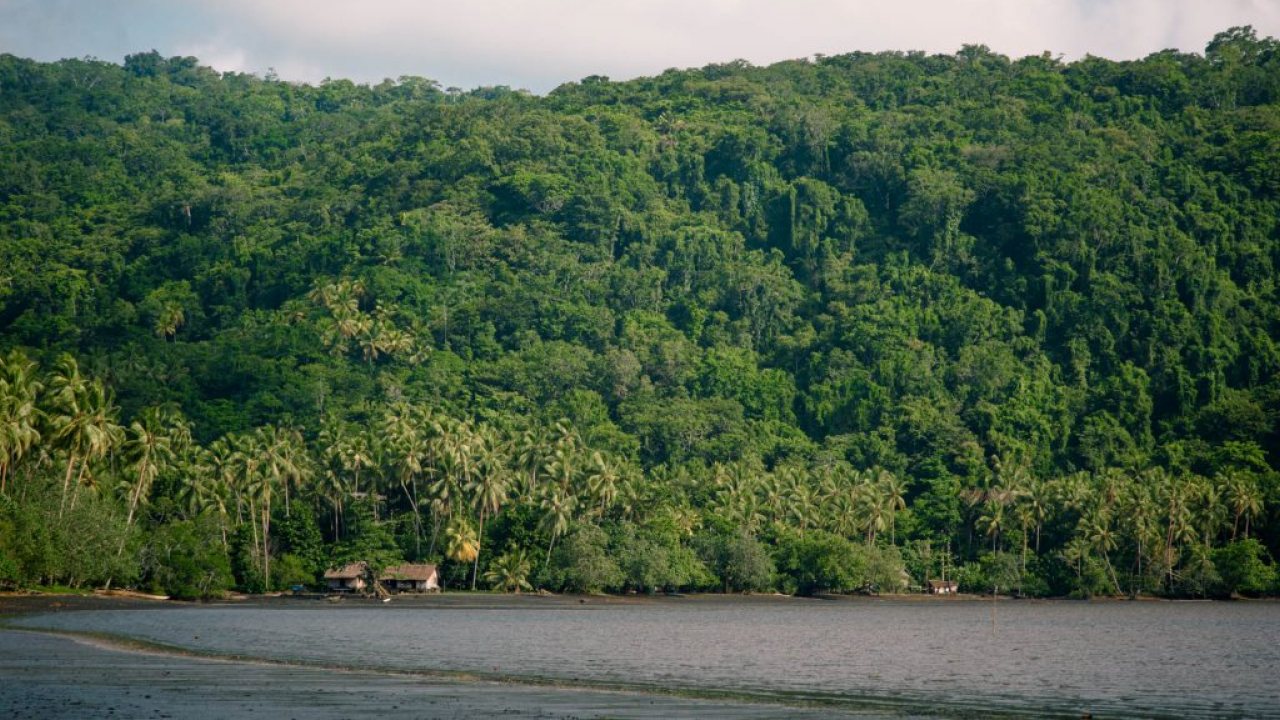
New Guinea Rainforest is on the 4th position in the list having around land area of about 786,000km². It is native to the island of New Guinea (divided between two countries). To the east are Papua New Guinea which is 123,000 square miles (318,000 square km) of primary rainforest, according to Global Forest Watch data and to its west is Indonesia. New Guinea is one of the most biodiverse regions in the world with less than 0.5% of earth’s landmass. It is hosting at least 5% global biodiversity 05%, with much of it remaining uncharted.
The rich rainforest is abundant in bird-life with number of ‘birds-of-paradise’ inhabiting these lowlands and approximately over 300 other species recorded. It hosts the rare Cassowary as well as variety of Parrots including Macaws. It is also abode to a vast number of Amazonia tribes which are native and who have been living there peacefully with the jungle for thousands of years. They have been relying on it and its resources like food and shelter base for medicine etc.
The New Guinea Rainforest is one of the primary drivers for this area’s water cycle, and that means global weather patterns too. It was home to the last population of Sumatran rhinoceroses on Borneo. Although these sub-species appear to have gone extinct there, it remains an invaluable wilderness.
Though, it’s less worrying as other tropical regions. But an increase in loss at areas with the largest remaining tracts of undisturbed natural forests on New Guinea was problematic. As nearly 2% have been lost between data samples from 2002–2019. Now, there are efforts to conserve the rainforest as local and global organizations collectively combat this unique place.
5. Mesoamerica – 768,000 km²
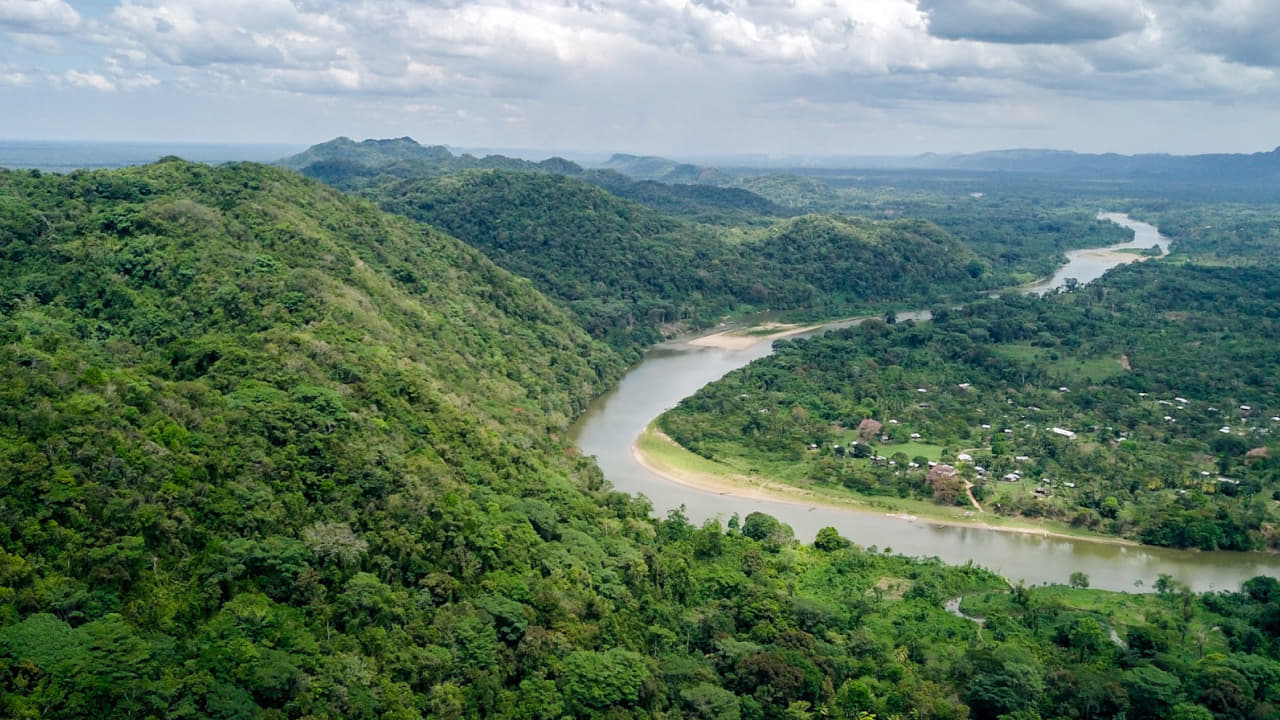
The 5th largest Tropical Rainforests of the world, the Mesoamerican rainforest covers an area sprawling across 768000 square km. This area includes southern Mexico through Belize in Guatemala, Honduras, El Salvador, and Nicaragua over to Costa Rica then again up into Panama. It is also known for holding one of the most ancient Mesoamerican civilization dated back to 21,000 BCE.
Mesoamerican rainforest is one of the most bio-diverse region to home with 17,000 species of plants and an overall total assortment in excess of four hundred mammal varieties. It is home to over half of all the tropical American mammals with 690 reptile and some 1120 bird species. It is also the third-ranked country in endemism, accounting for nearly 10% of flora and fauna found nowhere else on Earth.
The national park is among the wettest region but features some of Central America’s most diverse protected areas. It has the elevations changing from 27 m at sea level to nearly 1,600 meters. Across this part of Mesoamerica lays a variety of ecosystems that mosaic these corridors with an amazing array of wildlife. It hosts jaguars and howler monkeys, to the critically endangered Baird’s tapir.
However, as a biodiversity hotspot, the region represents an amazing potential for global conservation that is under threat from multiple angles. The logs of the forest disappear in large areas by agricultural expansion, cutting, and burning down forests for cattle ranching. Elsewhere, it is estimated that over 70% of woodland has been removed. It highlights just how much more conservation needs to be a part of life here.
6. Borneo Lowland Rainforest – 428,438 km²
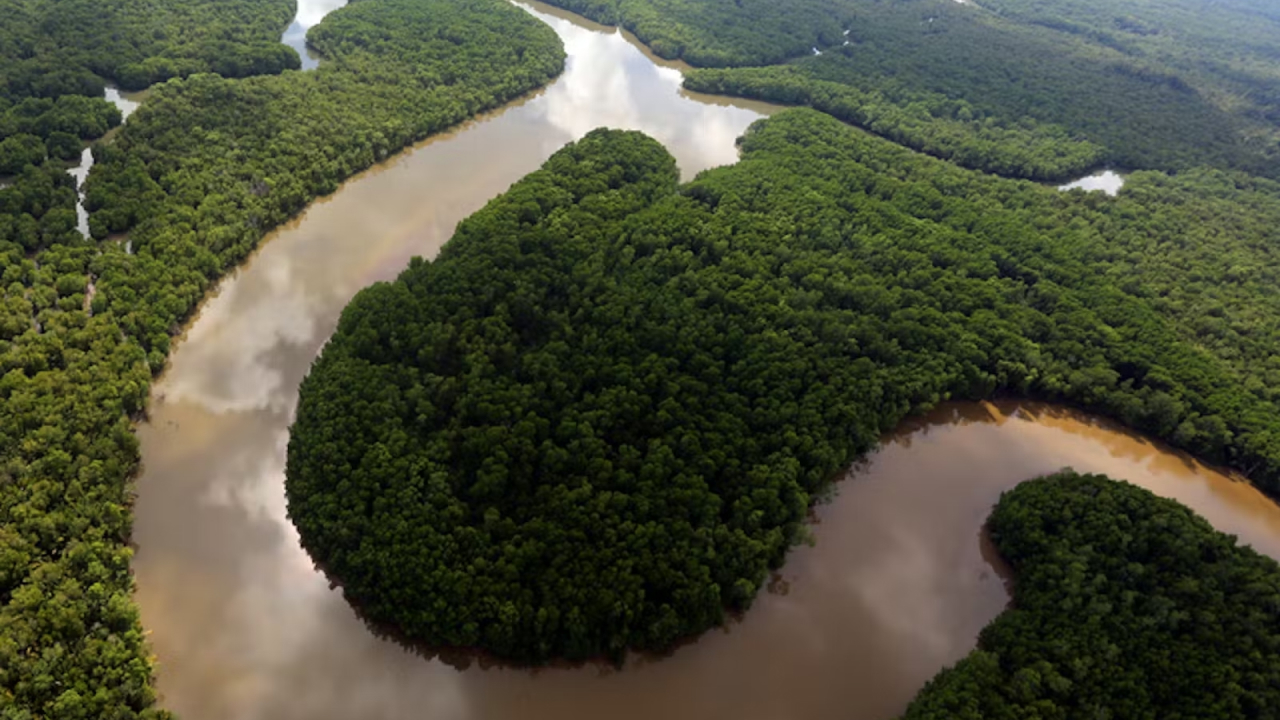
Borneo Lowland Rainforest is the sixth of the largest rainforests in the world with area of 504,000km2 (194900 sq. mi.). This giant tropical rainforest covers the island of Borneo located on the tri-nation (Indonesia, Malaysia and Brunei) border area.
The rainforest of Borneo shelters around 15,000 species of plants with over a quite staggering number, 3,000 tree types. Here, the trees from the Dipterocarpus family form canopy as high as 70 meters and over. There is an abundance of wildlife in the forest. An incredible diversity of species calls this heaven home, including the endemic Bornean orangutan, pygmy elephant and elusive clouded leopard.
Borneo lowland rainforest has probably one of the highest diversities on Earth with more than 15,000 vascular plant species. It hosts an impressive array of ecosystems; peat swamp to lowland forests and montane mossy forest. These diverse habitats create a wealth of biodiversity, including 221 species of terrestrial mammals and more than 420 bird species.
Unfortunately, the Borneo rainforests are quickly disappearing due to deforestation, largely for palm oil plantations, mining, and logging. Madagascar is one of the rapidly disappearing natural rainforests in world, over 30% or more have been disappear just within last four decades. Conservation work goes on but is typically limited in scope due to contrasting economical and land use pressures.
7. Valdivian Temperate Forests – 248,100 km²
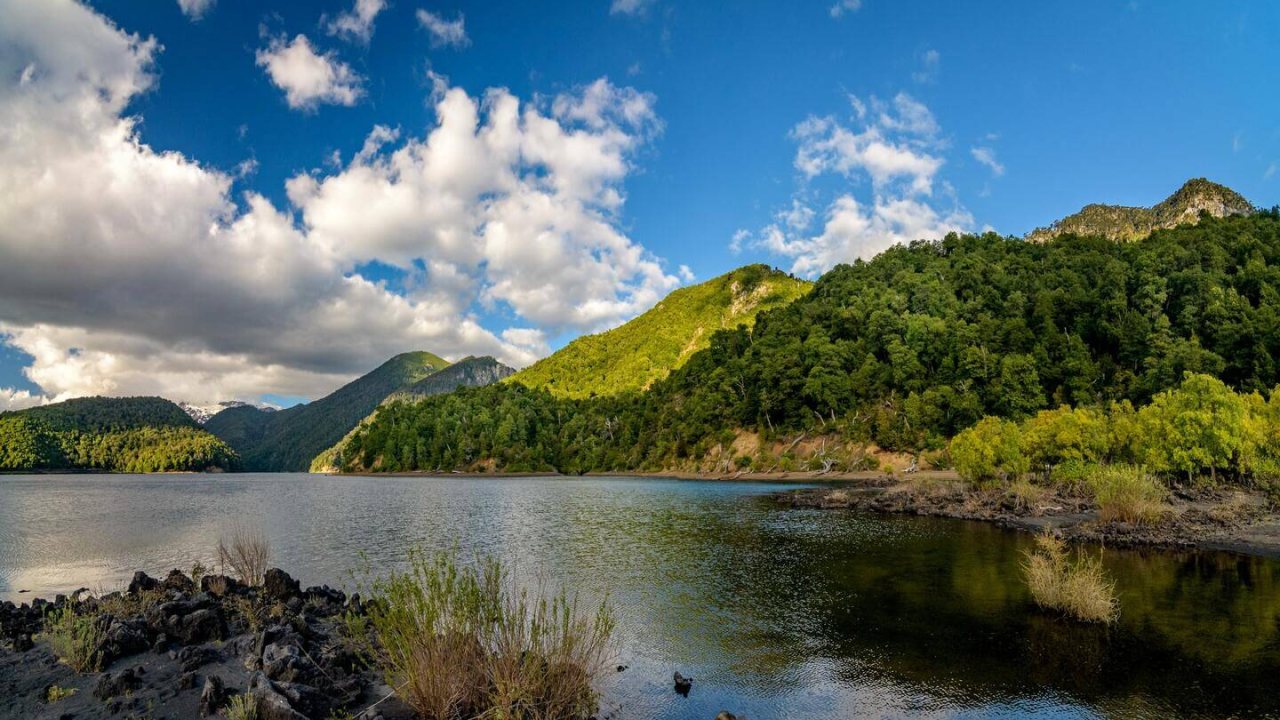
Valdivian Temperate Forests (1,200 eco-regions) is an ecoregion that only covers 248,100 km2 in Chile and Argentina. Its tree cover provides essential habitat for several species of mammals and birds living there. A few remnants exist in southern Chile and parts of Argentina, but this unique ecosystem is vanishing. Temperate Rainforest is subject to all-year-round rains, which are warm or mild in most cases and it falls within the full canopy of evergreen broadleaf forests.
The Valdivian Rainforest has a wide diversity of plant species and many of these plants are nowhere else but in this forest. Setting some incredible trees with the park, for example this giant alerce at almost 6,000 years. It has large regions of this extensive forest which is also rich in Nothofagus (southern beeches). A host of ferns, mosses and lichens also live here showcasing a deep green richness.
Wildlife is rich throughout these forests, while native species are soaring. There are Pudus (smallest deer in the world) and Darwin’s Fox (endangered species). The forest is possesses rich birdlife. The Magellanic woodpecker and Chilean pigeon species have been living in this biodiverse region since its inception.
Valdivian temperate forests are threatened everywhere by activities like logging, agriculture, and urban encroachment. In addition to this, introduced species have altered the landscape in other ways. Commercially-important species such as pine and eucalyptus are some of them. Local grey jays are a species of concern, so much effort is going to save the last remnants of these forests’ old growth and restore the habitat.
8. Eastern Australian Temperate Forests – 222,100 km²
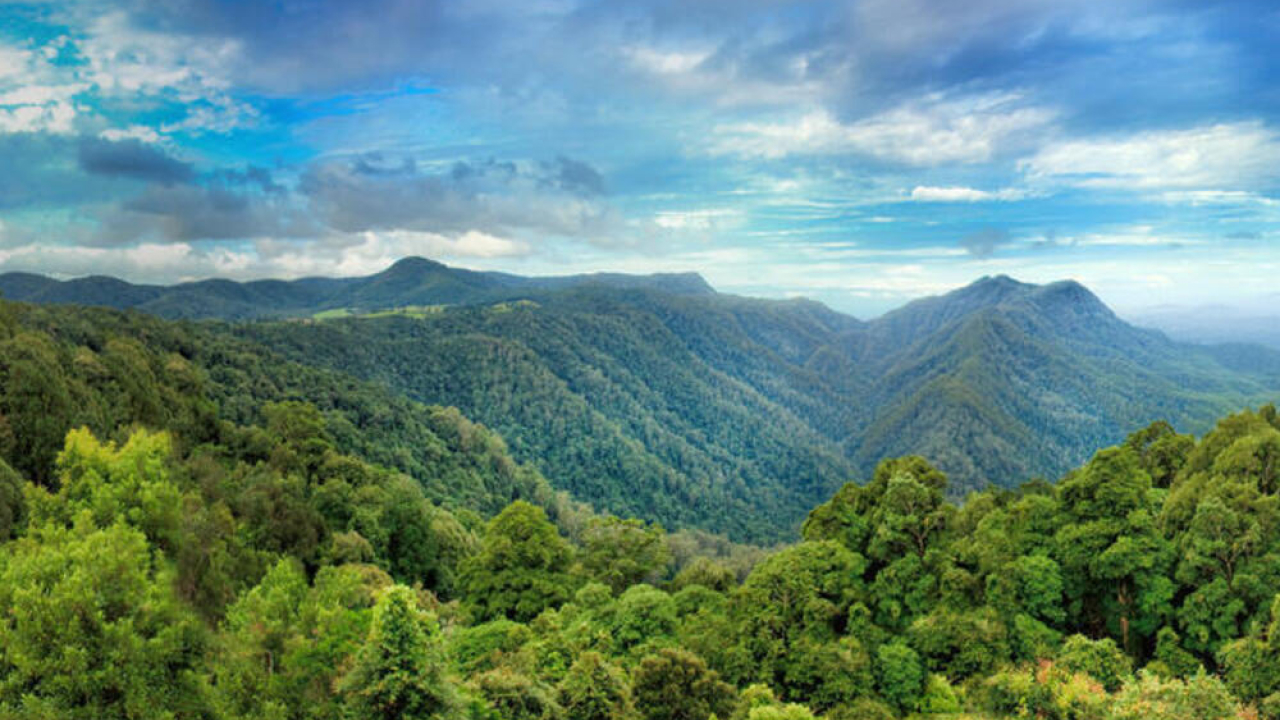
The Eastern Australian temperate forests (EATF) are a non-ecclesiastical biogeographic area. Situated in the Temperate broadleaf and mixed forests Alma Mater super order, entirely within Australia. The Marine Park expands to 212,500 square kilometers across waters off Australia’s south-east coast. They are the richest areas for plant diversity. They provide habitats to tens of thousands more plants, birds and mammals than any other rainforests in the world. All of them have a similar subtropical climate with warm summers and cool winters.
Some of the most recognizable forests are those situated within the Eastern Australian Temperate Forests hotspot. This includes a variety of eucalyptus trees that grow all over these hills. With many species over 100 meters tall, these canopies are home to a variety of wildlife. One of our most iconic animals’ lives in the forests too. With koalas (who eat virtually nothing other than eucalyptus leaves) and powerful owls along with the apex predator in this forest, hooting away.
Besides eucalyptus, other trees of the temperate forests are wattles (Acacia), blackwoods and myrtles. It is a rainy jungle with robust plant type and the blossom as synthetic floor helps lavish vegetation. At the same time, they absorb huge amounts of CO2 from air to fight climate change with carbon sequestration service.
Additionally, they are vital to the water regulation by forests. Rainforest canopy and underground hold water in the system provides throughflow of freshwater to areas around. It is also a source to expanding of agriculture, industry and various other uses.
The Eastern Australian Temperate Forests have been disappearing by logging, land clearing for houses or food paddocks and urban developments. But climate change is hitting a tipping point. Rising temperatures and changing patterns of precipitation will throw off these forests’ fragile equilibrium. Endeavors continue to being in conservation, for preservation stake of sustainable management along with habitat restoration.
9. Pacific Temperate Rainforests – 60,346 km²
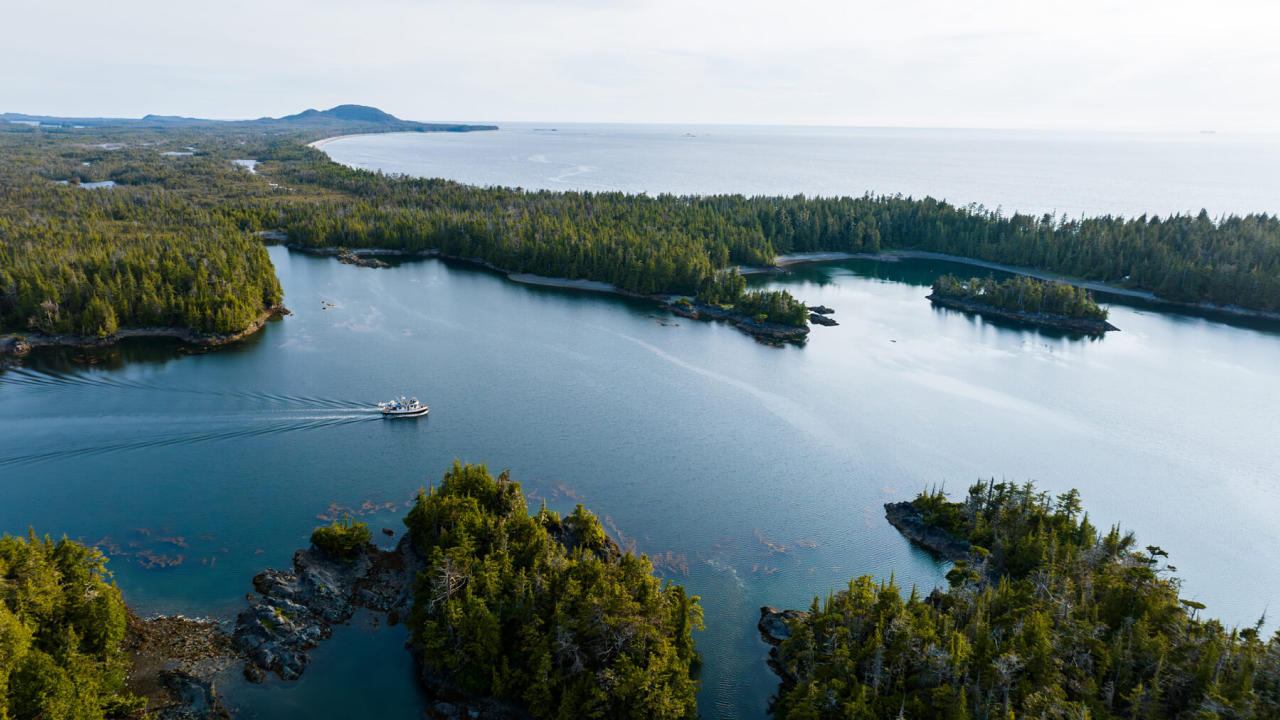
The coastal rainforests straddling the coast of northern California through towns in southeast Alaska have been named “The Pacific Temperate Rainforest.” These forests are the last temperate tropics of earth and cover an area about 60,346 km2.
Typically, the Pacific Temperate woodlands are lush, green and with huge trees all around. Best known for huge conifers, Sitka spruce, western hemlock and Douglas fir. A few of which can live over even 1000 years and grow up to the height above 90 meters. It has a moisture rich environment throughout much of the Pacific Northwest. With dense understory matted by ferns and drapered in mosses and shrubs.
Additionally, it is inhabited by wild animals which include black bears and Roosevelt elks just to mention a few. The rivers and streams of the region offers habitat for all most important fish species, in particular salmon. Their corpses decaying in the Pacific Temperate Woodlands makes the forest a healthier, more fertile ecosystem by moving around nutrients and feeding wildlife.
Silent whitebait is crucial for sequestering this corresponding subtropical rainforest as it counterparts’ massive Carbon Dioxide stocks clasped by their giant trees. In reality, they are vital water cleaners: sponging rainfall and slowly releasing it to the rivers. An area prized for its salmon and hydropower but indispensable to wildlife and human communities alike. Because this is what comes next in the indigenous way of water management.
However, there are many threats that place them in a dangerous position. This ecosystem has been subject to logging in the past as well. Entire forests cut down for timber and paper industries. Conservation efforts have protected many large areas of wilderness jungle. However, this has not stopped illegal logging and fragmentation from other threats. Climate change is just one more stressor added on in the long term.
The conservation efforts of the Pacific Temperate jungles revolve mostly around maintaining old-growth forests. This includes protection habitat critical to wildlife and sustainable forestry practices. This is why government and organizations work to protect these beautiful forests for the future generations.
10. Tropical Rainforest Heritage of Sumatra – 25,000 km²
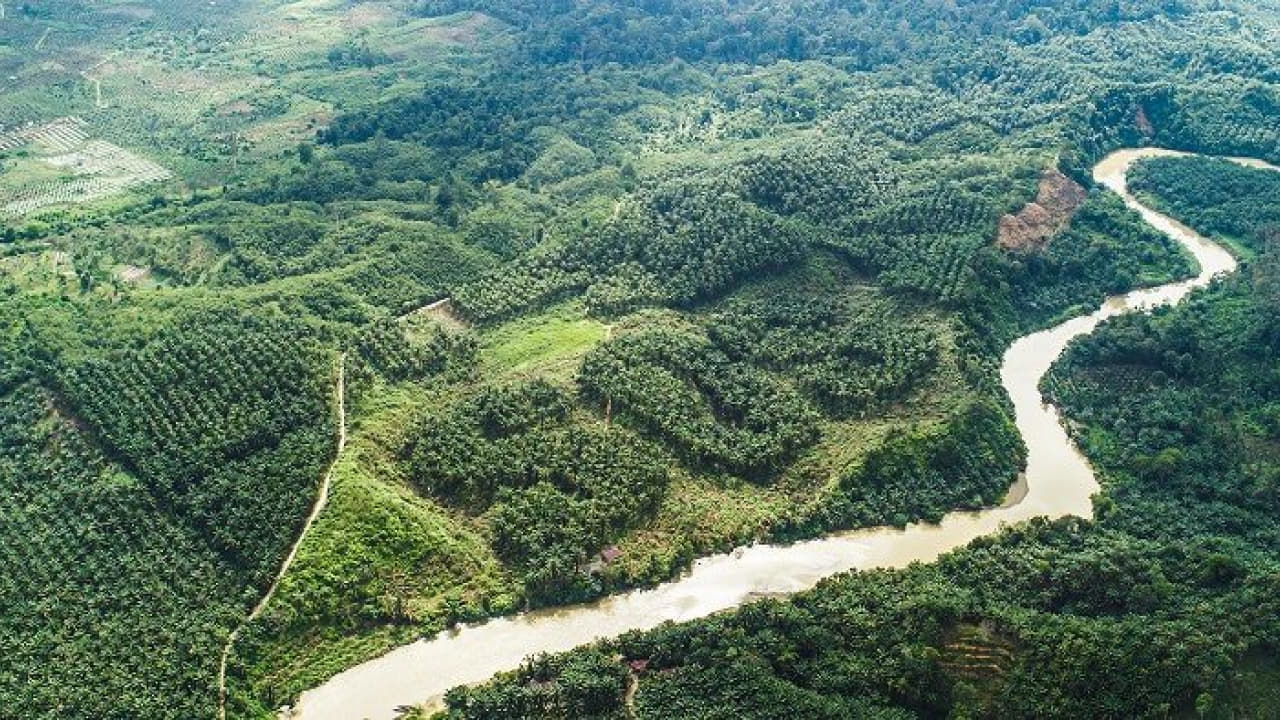
Tropical Rainforest Heritage of Sumatra is stretching over 25,000 kilometers (15,534 miles). The tropical woodlands in this site characterize some of the oldest forest remains to be found. They are a strong influence on weather and climate and not only one continuous forest.
This Heritage of Sumatra comprises three major national parks– Gunung Leuser National Park, Kerinci Seblat National Park, and Bukit Barisan Selatan National Park. Running parallel along the Barisan Mountain Range is a key aspect of its territory. It ensures a wide range in climate, and consequently support biodiversity on an enormous scale.
The whole is classified as an UNESCO World Heritage site in the category of outstanding universal value. Boasting too many endangered species to count. This forest is home to rare creatures such as the Sumatran orangutan, tiger, and rhinoceros. It supports over 10,000 plants and vertebrates with well-over 580 bird species to be found there as well as more than 200 mammal species.
The Sumatran rainforest is vital in controlling the climate and supporting life there; it provides freshwater to nine million people. Unfortunately, our planet is in dire straits and this incredible natural wonder has enormous threats linked with illegal logging, agricultural invasions and poaching! Much work is being carried out to protect this invaluable ecosystem. However, being a vast landscape with many people living in or adjacent to its long-term economic pressures continue bringing considerable obstacles.
11. Bosawás Biosphere Reserve – 20,000 km²
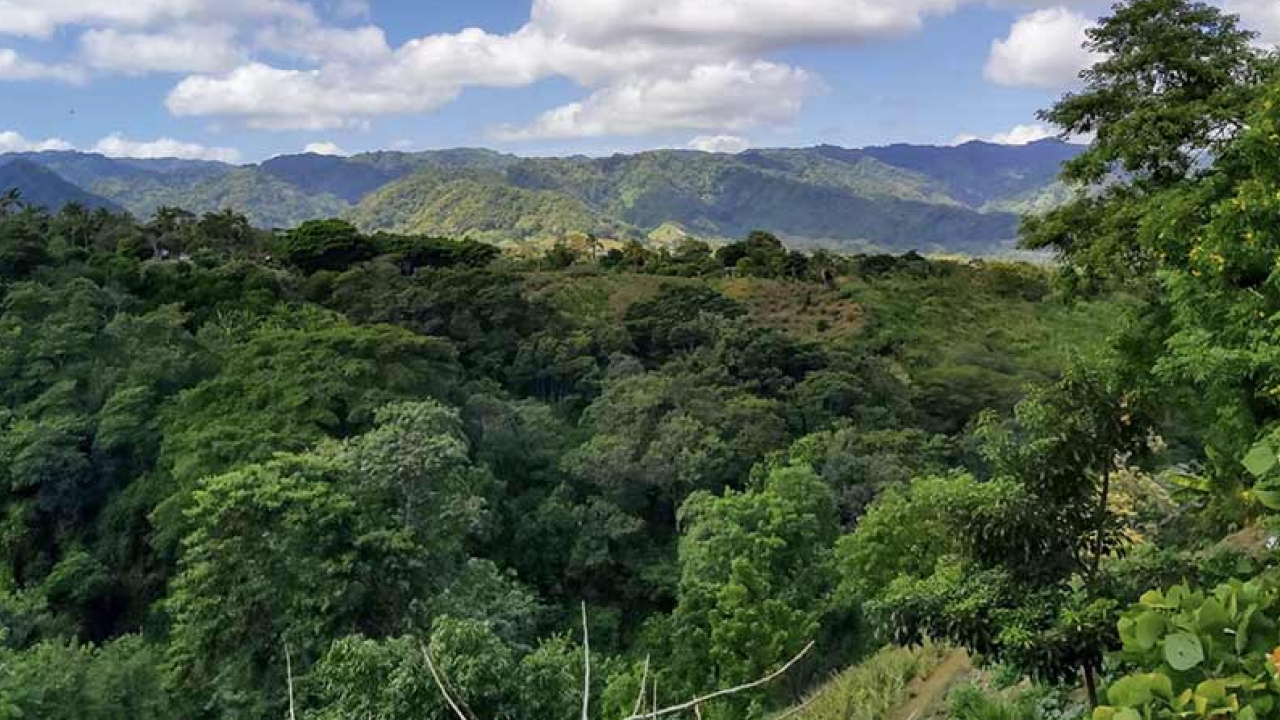
Bosawás is in the Mesoamerican Biological Corridor, another vital area for wildlife conservation across Central America. It is a resolve for deep rooted flora-fauna. Then with jaguars, pumas and tapirs in residency, this forest also welcomes one of the planets largest eagles; The Harpy Eagle. In total, the reserve also harbors approximately 200 mammals and no less than 700 bird species. Along with more than 200 types of reptiles and amphibians. This jungle is inhabited by several thousand species of trees, plants and fungi.
The Bosawás Biosphere Reserve is home to a huge diversity of wild flora and fauna, an ecosystem whose richness sustains the living conditions for several indigenous communities. The UNESCO has also initiated the ‘Man and the Biosphere Programme (MAB)‘ for World Network of Biosphere Reserves. The forest has been home to the Mayangna and Miskito people for centuries, who make their living from its resources. Since time, the elaborate ethnic minorities of Amazon Jungle were passing on their traditional knowledge to children. Which would be the most intelligence-adaptive and sustainable for inhabitance upon sylva.
However, the reserve is being pressured by illegal logging gangs and land-grabbers who are converting mature tropical rainforests into monocultures. All of this has led to the erosion and fragmentation of ecosystems which in turn have disrupted a delicate balance. While conservation efforts remain, the future does not seem bright as compliance with environmental safeguard measures are already low.
12. Westland Temperate Forests – 11,880 km²
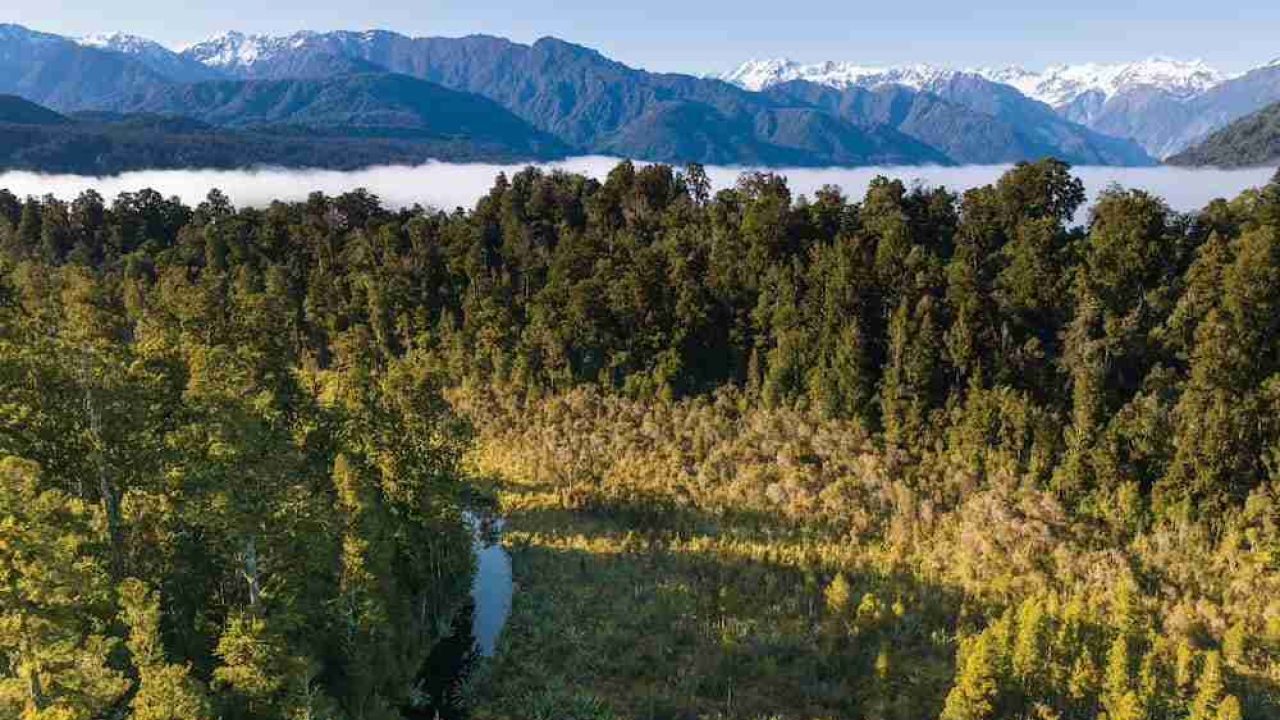
New Zealand’s Westland Temperate Forests are incredibly vast – at 11,880 km squared it is one of the largest temperate rainforests in the world. The green space is located on the West Coast of New Zealand’s South Island at around 6000ft inside Westland Tai Poutini National Park.
The Westland Temperate Forests eco-region possesses the only known assemblage of relict floras. In which living sclerophyll beech (Nothofagus moorei) occurs with several species now restricted to cooler, more southerly regions. The forests form part of the Te Wāhipounamu – South West New Zealand World Heritage Area, which is recognized for its natural scenery and wildlife values. The cold, rainfall climate of the region assists in its development. It is a thick cool-temperate rainforest with high trees made up largely (up to 50%) by old podocarps and southern beech.
These forests provide a home to many species unique to New Zealand, such as kea (the South Island alpine parrot) and Haast’s eagle (now extinct). They discovered a high species diversity of plants in the forests with over 700 recorded vascular plant species.
The Tuatapere Hump Ridge Track passes through a temperate woodland which is vital in New Zealand’s water cycle. As it acts like an overgrown sponge absorbing and gradually releasing water. It happens for adjusting the course of rivers so that they do escape their confines, while preserving a system of river. These forests are not even safe in a place as remoteifers from the global north. Of course, this fragile ecosystem is under threat from inevitable climate change-induced shifts and invasion of non-native species (development such as logging and mining).
Consequently New Zealand has implemented strict conservation controls to protect the Westland temperate forests including protected areas. This includes biosecurity, such as eradication programs for introduced enemies. They are important efforts in the task to help save this unique and ancient forest for generations yet unborn.
Largest Tropical Forests by Area Comparison
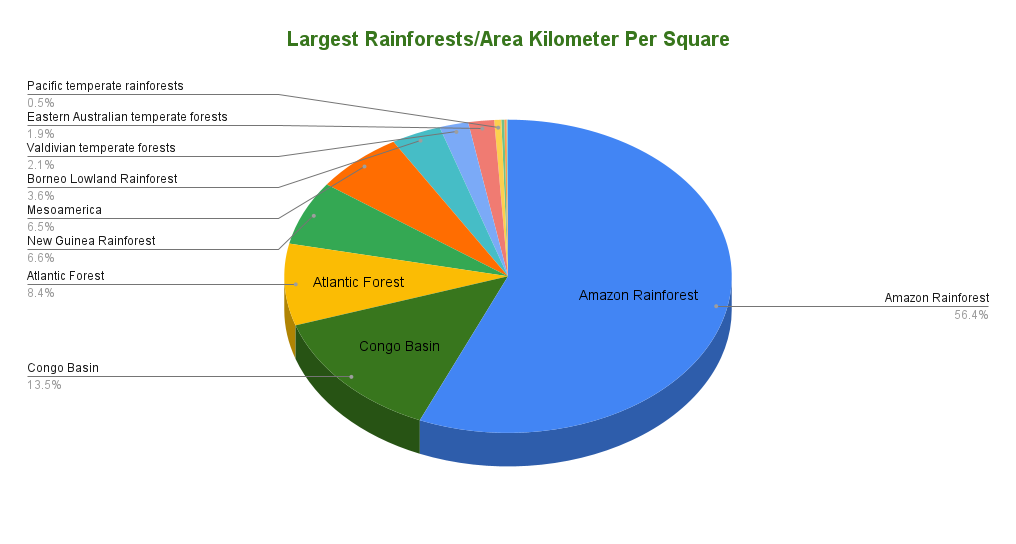
Comprehensive Specifications
Following is a detailed table outlining the major features of the largest rainforests in the world:
| Rank | Rainforest | Size (km²) | Location | Key Features |
| 1 | Amazon Rainforest | 6.7 million | South America (Brazil, Peru, Colombia, etc.) | The largest rainforest in the world, home to 10% of all known species, a vital carbon sink, diverse ecosystems. |
| 2 | Congo Basin | 1.6 million | Central Africa (DR Congo, Cameroon, etc.) | The second-largest rainforest, rich in biodiversity, critical for regional climate regulation. |
| 3 | Atlantic Forest | 1,000,000 | Brazil, Paraguay, Argentina | Highly fragmented, yet rich in biodiversity, home to many endemic species, under severe threat from deforestation. |
| 4 | Mesoamerica | 768,000 | Central America (Mexico to Panama) | Part of the Mesoamerican Biological Corridor, supports a wide range of species, critical for migratory birds. |
| 5 | Borneo Lowland Rainforest | 428,438 | Borneo (Malaysia, Indonesia, Brunei) | Known for its high biodiversity, home to endangered species like the Bornean orangutan, rich in unique flora. |
| 6 | Valdivian temperate forests | 248,100 | Chile, Argentina | One of the largest temperate rainforests, known for ancient trees, endemic species, and unique ecosystems. |
| 7 | Eastern Australian temperate forests | 222,100 | Australia | Rich in biodiversity, includes Gondwana rainforests, home to ancient plant species, a UNESCO World Heritage Site. |
| 8. | New Guinea Rainforest | 786,000 | Papua New Guinea, Indonesia | Contains some of the most ancient rainforests in the world, high levels of endemism, significant cultural diversity. |
| 9 | Pacific temperate rainforests | 60,346 | North America (Canada, USA) | One of the largest temperate rainforests in the world, includes ancient trees, diverse marine and terrestrial life. |
| 10 | Tropical Rainforest Heritage of Sumatra | 25,000 | Indonesia (Sumatra) | UNESCO World Heritage Site, home to critically endangered species like the Sumatran tiger and orangutan. |
Conclusion
So, with all due respect to Groovy Greens… the very planet itself (as we know it up here) would be dead if everything else on this earth was not quite so alive as these rainforests. They stretch from the tropical to temperate tropics in the world. Concurrently, they are experiencing immense environmental disasters from human activities and global warming as well.
At stake are those forests and the myriad species that rely upon them. We have to protect this natural beauty for our children, who are the peoples of Earth. The answer is simple, it puts green or tropical jungle at risk since these forests are irreplaceable and unique in their own way but highly dependent on public conservation strategies. Another reason is that we depend on their survival, not only for all the wonderful species found but in general to ensure our planet remains green and healthy.
One thing that is important, however, we need to make sure our rainforest home remains because aside from housing a multitude of different species, it serves as an inspiration for the generations.
As we wrap up our journey through the world’s largest rainforests, let their awe-inspiring beauty remind us of the urgent need to protect these vital ecosystems. Every action counts in preserving these green giants for the future—let’s cherish and safeguard them together.
